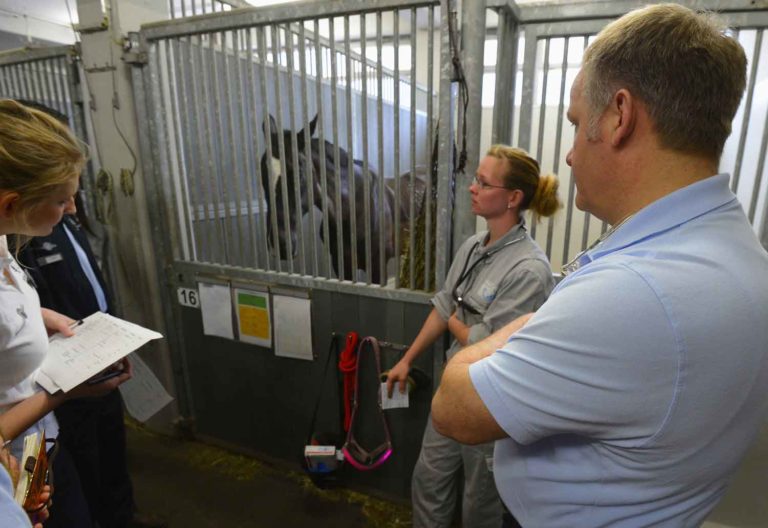
Research from the University of Florida gives new hope to horses with ulcerative keratitis with furrow. The paper was published in the Equine Veterinary Journal and is available here.
The article titled “Equine ulcerative keratitis with furrow: a review of the outcomes of 72 cases from 1987 to 2015” was authored by Berkowski, Jr. W. M.; Craft, W. F.; Whitley, R. D.; Brooks, D.E.; and Plummer, C. E.
This retrospective case series aimed to describe the features and outcomes of horses with ulcerative keratitis with an associated peripheral furrow (circumferential thinning of the corneal stroma ≥20% deeper than the central lesion and surrounding cornea).
A total of 72 horses with furrow-forming ulcerative keratitis seen at the University of Florida between 1987 and 2015 were included in the study. A definitive etiologic diagnosis was available for 37 eyes; with 27% (n = 10) diagnosed with fungal keratitis, 38% (n = 14) with a mixed fungal and bacterial keratitis and 35% (n = 13) with bacterial keratitis.
Treatment varied between patients. In total, 36% of eyes (n = 26) were treated with medical therapy alone and the remaining 64% (n = 46) were treated with a combination of medical and surgical therapy. Surgical interventions included keratectomy (superficial keratectomy, anterior lamellar keratectomy, or penetrating keratoplasty) with or without an accompanying graft or conjunctival flap. Grafting materials included frozen equine donor cornea, equine amniotic membrane, and/or processed porcine small intestine. Of those that received medical therapy alone, 20 (77%) healed with a positive visual outcome and 6 eyes were non-visual (23%). Of the 46 eyes which received surgical intervention, 40 (87%) healed with a positive visual outcome and six eyes were non-visual (13%). In total, 83% (n=60) of eyes healed with a positive visual outcome following surgical and/or medical treatment. The remaining 17% (n = 12) were considered treatment failures, with six requiring enucleation and six becoming phthisical.
Bottom Line
Equine cases of ulcerative keratitis with furrow might have a more favorable prognosis than previously thought. The specific etiologic diagnosis was not a significant predictor of visual outcome. Surgical treatment was not associated with an increased likelihood of a positive visual outcome.

![[Aggregator] Downloaded image for imported item #18782](https://s3.amazonaws.com/wp-s3-equimanagement.com/wp-content/uploads/2025/11/03125751/EDCC-Unbranded-13-scaled-1-768x512.jpeg)
![[Aggregator] Downloaded image for imported item #18375](https://s3.amazonaws.com/wp-s3-equimanagement.com/wp-content/uploads/2025/09/30140031/EDCC-Unbranded-26-scaled-1-768x512.jpeg)

